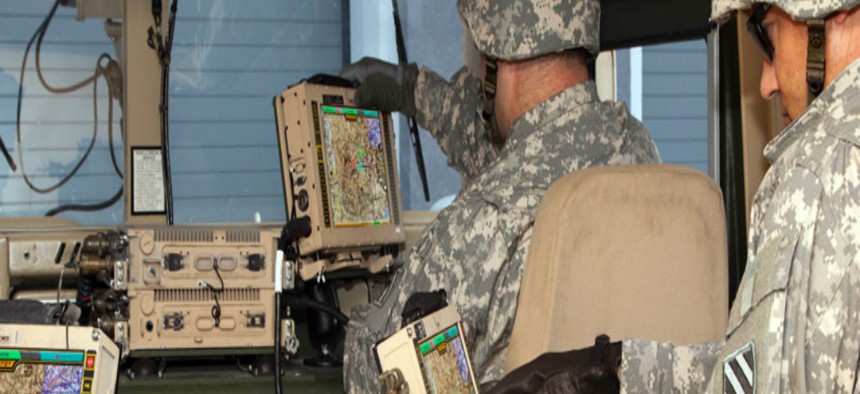New li-ion battery will make soldiers’ electronics more efficient and less explosive
The Army Research Laboratory has developed a hydrophobic gel coating that will make li-ion batteries safer for soldiers on the battlefield.
Laptops, smartphones, and other portable electronic devices are saving soldiers’ lives in the field. Now, they will be even more effective, because the Army Research Laboratory’s (ARL) new hydrophobic polymer gel coating means they can be powered by lithium-ion batteries, without the risk of explosion.
“In the past, if you wanted high energy, you would…have to compromise on safety. If you preferred safety…you would have to settle for lower energy,” said Dr. Kang Xu, a Fellow at the ARL. “Now, we are showing that you can simultaneously have access to both high energy and high safety.”
A lithium-ion battery cell contains a cathode and an anode separated by a permeable electrolyte barrier. According to research publications by the University of Texas, during the charging process, lithium ions pass through the electrolyte curtain from the anode to the carbon cathode. When the battery provides energy, the lithium ions travel the other way.
Traditional li-ion batteries are highly efficient because lithium’s atomic instability means its ions contain a high amount of energy. However, according to the ARL press release, non-aqueous li-ion batteries contain highly flammable organic solvents that tend to catch fire or explode if the metal of the battery happens to touch the electrolyte.
That is why the ARL has now created a hydrophobic gel polymer coating for the electrolyte barrier. When the lithium ions travel through the electrolyte curtain to the anode to provide power, the gel coating shields the process from energy-draining water molecule byproducts, according to the ARL press release. Once the battery is charged for the first time, the gel breaks down into a thin protective layer that covers the electrolyte curtain so that power and efficiency is not lost to byproduct reactions.
“The key innovation here is making the right gel that can block water contact with the anode so that the water doesn’t decompose and can also form the right interphase to support high battery performance,” explained Chunsheng Wange, Professor of Chemical and Biomolecular Engineering at the University of Maryland and a collaborator with the ARL.
The hydrophobic gel interphase coating makes the li-ion battery both less volatile and more productive, allowing it to reach the 4.0 voltage level required for laptops and other devices used on the battlefield.
In addition to portable electronic devices, the ARL reports that it is also developing hybrid vehicle technology, a new dismounted electronic warfare system, and other technology will benefit from using li-ion batteries.
“The Army is developing hybrid vehicles for use on the battlefield and that means they will also use lithium-ion batteries,” said R. Arthur von Wald Cresce, a researcher within the electrochemistry branch of the ARL. “Certain high-energy applications such as reactive armor and directed-energy weapons also seem suited for lithium-ion batteries, although those technologies are still developing.”
The portable electronic warfare system would give dismounted soldiers the ability to detect and classify all frequency signaling being conducted in the area, which could then be used to locate and target an adversary, according to a press release by the the 2nd Brigade Combat Team, 101st Airborne Division.
However, “when you are…going out and doing a 12-hour mission where you want to keep enemy comms jammed, that [requires] a lot of batteries,” one member of the unit said.
The new hydrophobic gel li-ion battery is the first time a li-ion battery has been both high-voltage and low-explosion risk. Although it is not clear when the technology will be ready for implantation in electronic devices, the ARL reports that it is optimistic the technology will improve device performance for soldiers in the field.





